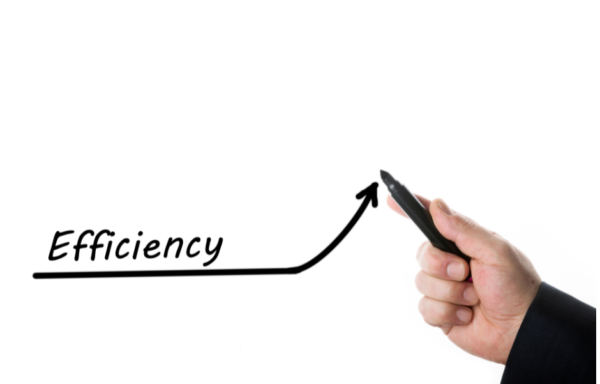Summary
Steps to create efficiency in your small business.
Identifying Inefficiencies
Running a small business often means wearing many hats, and that can be exhausting. In this first part of our series on creating efficiency in your small business, we’ll delve into the crucial task of identifying inefficiencies and streamlining processes to save time, money, and improve overall productivity.
Step 1: Identify the Processes to Work On for Small Business Efficiency
The first step in creating efficiency is identifying the areas that need improvement. Start by jotting down the tasks you perform on a daily, weekly, monthly, quarterly, and annual basis. These tasks form the backbone of your business operations, but they may also be draining valuable resources if they’re not optimized.
Ask yourself:
- What tasks could and should be delegated?
- As the CEO of your business, it is important to know which tasks only you could or should do and what tasks could be best served by someone else. This allows you to utilize your time mor efficiently and use your skills where they make the most sense and money.
- Which processes are repeatable and easy to do?
- This is often a sure sign that it is a task that, once the steps and procedure are defined, it could easily be delegated to someone else.
- What tasks seem inefficient, complicated, or costly?
- Sometimes it’s good to stop and take a hard look at what is not working so well and decide how to fix that.
- What do you want to achieve? Saving time, money, improving customer service, or eliminating overlapping tasks?
- Who is currently responsible for each task, and is there a duplication of effort?
- Evaluate their performance and decide if they are the right person to do the job or not. Are they overloaded with tasks, simply because you can rely on them to get things done? You want to avoid burnout by spreading the load and making sure the right person is doing the job.
- Are you clear on the expected outcome for each task?
- This is important. Know what you expect and be able to convey that.
- Are there tasks that you never get around to that should be addressed?
- Seek input from your team members; they may have valuable insights into areas that could be improved.
Use this checklist to help you.
Step 1 Checklist Identifying Inefficiencies
Step 2: Document What You Are Doing Now
for Small Business Efficiency
Once you’ve identified the processes that need attention, it’s time to document them. Create a single page for each task, detailing how to perform it, the frequency, who is responsible, and any other pertinent information. Include even the smallest details to ensure clarity and consistency.
At this stage, this is you doing the task, determining the steps and desired outcome, so you can train someone else to do it exactly that way.
For each task page, include:
- Department the task falls under (i.e. sales, operations, marketing etc?)
- Name of the Process to complete this task (i.e social media posting, opening checklist, closing checklist etc.)
- Purpose of the Process
- What is the desired outcome or expectation? How is it connected to other tasks both in this department as well as other departments?
- Priority Level
- How important is this task to be done in the frequency you have assigned. Everything can’t be critical. Identify if it is High-Medium or Low priority. If there are too many tasks identified as “Low Priority” that never get done, you might consider determining if it should be on the list at all, or do you need another person to be responsible for this?
- Responsible Party
- You do not name them by name, but rather job title and department.
- Frequency
- How often should this task be performed? Should there be times when it is a ”deep dive” while other times are “touch up” or “maintenance?”
- Step-by-Step Execution
- For this purpose you will assume that the person reading this has no experience at all in performing this task. You want to walk through every single step, no matter how small, to make sure the process is clear.
- Reporting Structure
- Who does the person performing this task report the outcome to? In what format? Written, verbal, digital etc.
- Identify tasks to be delegated and ensure instructions are clear.
- Note any necessary tools or access codes. What tools should they use?
- Are there certain security codes or other access codes they will need?
Use this checklist to help you.
Step 2 Checklist Documenting Current Processes
Wrapping it up:
You’ve taken the first step towards creating efficiency in your small business by identifying inefficiencies and laying the groundwork for improvement. Here’s a quick recap of what we covered:
- We discussed the importance of identifying processes and tasks that are ripe for optimization.
- You learned how to prioritize tasks based on their impact and inefficiency.
- We explored methods for documenting current processes thoroughly, ensuring clarity and consistency.
- You’ve gained insights into delegating tasks effectively and soliciting input from your team.
Now, as we look ahead to Module 2, we’ll dive deeper into the process of refining and optimizing your business operations. Here’s what you can expect:
- We’ll explore strategies for analyzing and evaluating your documented processes to identify areas for improvement.
- You’ll learn how to streamline and automate repetitive tasks to save time and resources.
- We’ll discuss the importance of continuous improvement and how to foster a culture of innovation within your organization.
- You’ll walk away with actionable steps for implementing and testing new processes to ensure effectiveness.
Get ready to take your business efficiency to the next level in Module 2! We’ll equip you with the tools and knowledge you need to streamline your operations and achieve greater success. Come back next week!



